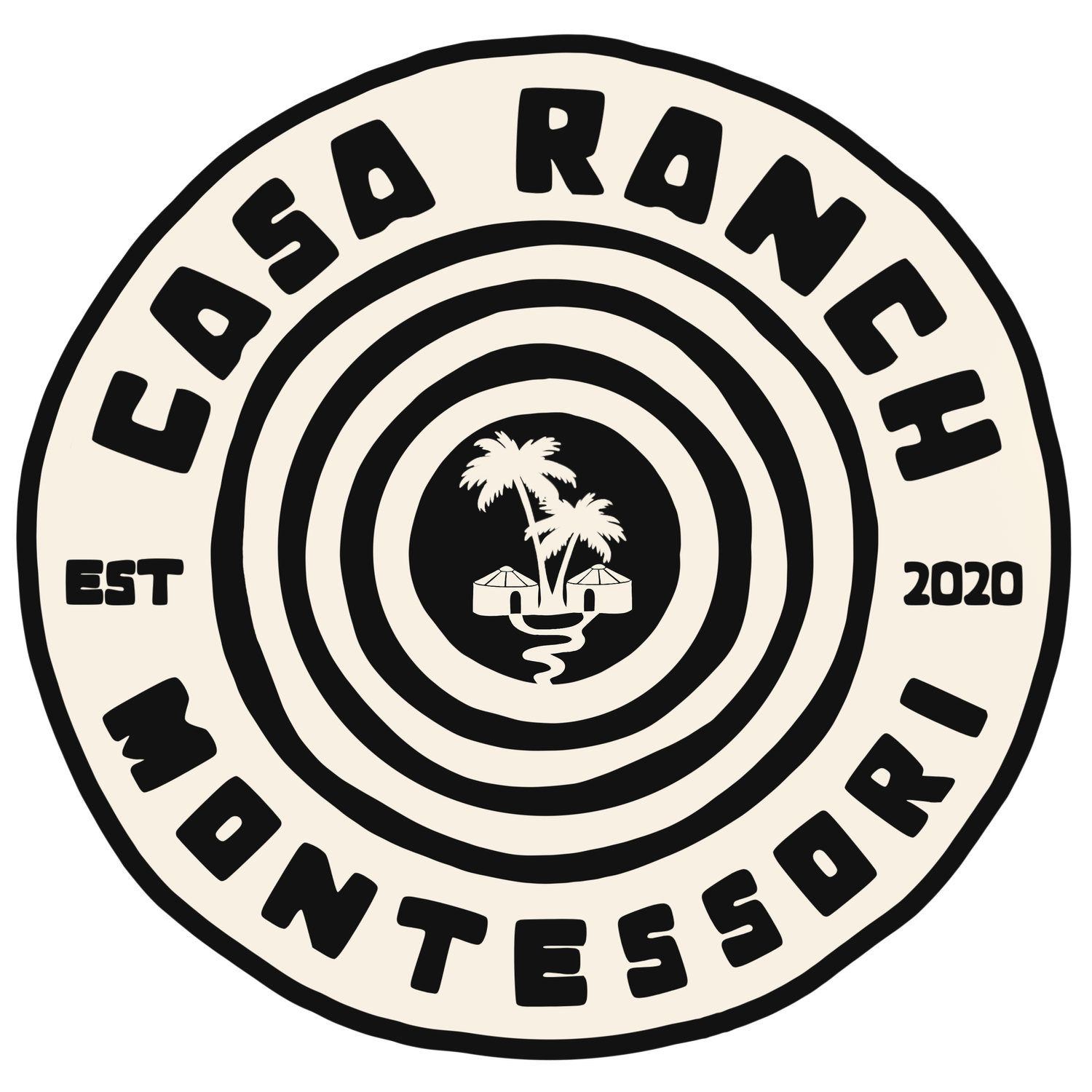“The educational goal of Montessori Elementary education is to develop within the children a global vision. Montessori calls the path whereby this goal is achieved ‘cosmic education.’ The result of cosmic education for the children is a developing gratitude for the universe and their lives within it.”
— Paula P. Lillard, Montessori Today: A Comprehensive Approach to Education from Birth to Adulthood
Always ahead of her time, Dr. Maria Montessori saw a dire need to give children the opportunities to become conscious of the fundamental unity of humans, life, and the interconnectedness of our Universe. Composed of five major stories, Montessori’s Cosmic Education is designed to spark imagination, arouse curiosity and interest, preparing children to accept responsibilities for shaping their future and creating a world that is peaceful for all human beings, living species, and Earth itself. In the Elementary years, as children’s power of reason is stimulated in search for life’s questions, the Great Lessons serve as a context for further macro to micro exploration, like a concentric circle, from Earth’s geological history down to biological evolutionary concepts of life from plants and animals, to humans and modernization. Through each successive story, the law and order and interrelationships within the universe gradually become clear to students, leading them to ask their own questions and explore further using their applied research skills.
Cosmic Education
First Great Lesson
For Dr. Maria Montessori, the starting point of history should unquestionably be taught with the fundamental origin story, the Story of the Universe. This First Great Lesson is presented and demonstrated with stories, visuals, and experiments so children can begin to understand interlocking scientific concepts such as the laws of physics and chemistry. Materials are purposefully placed on the shelves for further discovery and independent learning through hands-on experiential activities. Here children learn about the Big Bang, formation of our sun, stars, planets, galaxies, and Earth.
Second Great Lesson
The Second Great Lesson, the Story of Life, dives deep, in all its myriad forms, about every living thing from the very beginning of life on Earth. Here, children learn about single-cells and then multi-celled forms of life through stories, impressionistic visuals, and beautifully illustrated timelines that visually go over the evolution of life embedded at the bottom of the sea to fossils and the different eras of time. Children’s imagination is ignited as they see the developments of trilobites, vertebrates, plants, dinosaurs, bird, and mammals. This presentation also gives much clarity to climate and geological changes over time and how plants, animals, and landforms have evolved and shaped modern species and geography that exist today.
Third Great Lesson
The Third Great Lesson, the Story of Humans, introduces the evolution of humans and their unique endowments. Students learn about these endowments that are special to only humans; intellect, the power to reason, to think, to know, and to understand; and love, the power of will, to choose the good of others, and thus to serve. The ultimate goal from this lesson is to develop in children an appreciation for all mankind.
Fourth Great Lesson
The Fourth Great Lesson tells of one of the two key turning points in human development. The Story of Communication in Signs presents the development of written language focusing on the power of communication and how the ability to communicate ideas in art and writing has transformed human society. This lesson leads students to an exciting exploration of various systems of writing including Chinese and Japanese calligraphy, Egyptian hieroglyphics, and the evolution of modern alphabets, as well as studies of significant technological advancements, including the creation of paper, the invention of movable type, and the printing press. These investigations stimulate in children the desire to become good writers and communicators.
Fifth Great Lesson
The Story of Numbers tells of the second key turning point in human development, detailing the invention of number systems and the power of our decimal system. Children explore the Mayan and Roman numbers, as well as counting in different bases and the connection between mathematics and science. Children begin to contemplate life without numbers and begin to wonder why numbers were invented and what purposes they serve and have served throughout human history.
Last Great Lesson
The Nation of the Great River offers a metaphor of the evolutionary end of human history in Montessori’s cosmic plan, “Humanity is an organic unity that is yet to be born.” The allegorical story focuses on human anatomy and physiology as well as the evolution and integration of human civilization. It tells the story of the great country (the human body) that is simultaneously peculiar and marvelous and entirely traversed by a great river (the circulatory system in the human body). It invites students to explore the systems and organs of the human body and how the inhabitants of the nation (our cells) work without rest in efforts of maintaining order and harmony in the country. The fable also allows for inquiry of how early civilizations impacted one another and how they slowly organized themselves towards unity.

